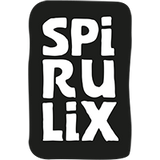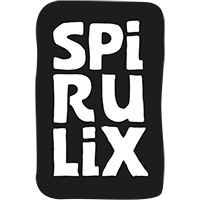Spirulina Algae: Ingredients
The small microalgae spirulina is characterized by a particularly high nutrient and vitamin content, making it a superfood. What exactly is in the super algae and how can you benefit from it in everyday life?
Spirulina Algae: Ingredients
The distinctive color of the spirulina algae is created by the pigments phycocyanin and chlorophyll. However, the color is not the only thing that makes the microalgae so special. In contrast to macroalgae, which we mainly know from the Japanese around the corner, spirulina is what is known as microalgae, which, as the name suggests, are tiny and not visible to the naked eye. There are around 35 different types of Spirulina in total, the most well-known of which is Arthrospira platensis.
In general, cyanobacteria grow in freshwater and saltwater lakes and are native to Australia, Asia, Africa and Central America. Spirulina has been used as a food there for centuries. Spirulina algae are now also being cultivated in Austria and Germany, mostly in aquaculture and under strict hygiene conditions and quality standards. This clears up some prejudices about a bad ecological balance of spirulina and makes room for more important things.
The microalgae consists of 60% high-quality, vegetable proteins, which the body can utilize very well. In addition, Spirulina contains a range of essential amino acids, vitamins (B1, B2, B3, A and E), minerals (magnesium and iron), and antioxidants (chlorophyll and phycocyanin) . The regular intake of spirulina can also contribute to a balanced diet and help to cover the daily requirement of some minerals.
This makes the microalgae ideal for everyone , it can prevent vital substance deficiencies and, if necessary, optimize the supply of nutrients.
The effect of spirulina algae
The effects and side effects of Spirulina have only been little researched, scientific studies or research are rare and clear findings have not been proven to date. However, no compromises should be made when it comes to the quality and origin of the Spirulina algae. If the alga grows in uncontrolled conditions, such as water with an increased mercury content, the alga absorbs it and can cause great damage in the body by eating it.
At Spirulix in Austria, we are committed to these high quality standards and grow the small miracle algae on our own algae farm in the middle of Lower Austria. The harvest is done by hand in the family business and of course the highest quality and hygiene standards are observed. The product range extends from nutritional supplements in powder form to unique snack products such as spirulina crackers and chocolate to various mueslis. There is something for absolutely everyone.
Only if you have a spirulina allergy should you avoid the superfood and look for other alternatives. Potential drug interactions should also be discussed with a doctor or pharmacist.
How do you take spirulina?
The recommended daily consumption of spirulina is 3-5 grams, depending on the activity level and the vital substance deficit. Spirulina powder, on the other hand, is ideal as a component in liquids such as juices, smoothies or smoothie bowls. Due to the powder and flake form, nutrients and vitamins can already be absorbed through the oral mucous membranes and can therefore be utilized more quickly by the body.
At what time of day the spirulina algae are taken does not play a major role. However, it is often recommended to take the microalgae before or after breakfast in order to provide the body with the necessary building blocks for daily processes in the morning.
At Spirulix you will find various spirulina products of the highest quality. With us you can, for example, choose between spirulina powder , spirulina snacks and muesli or our spirulina packages , with which you can test our products or order several of your favorite products at the same time.












